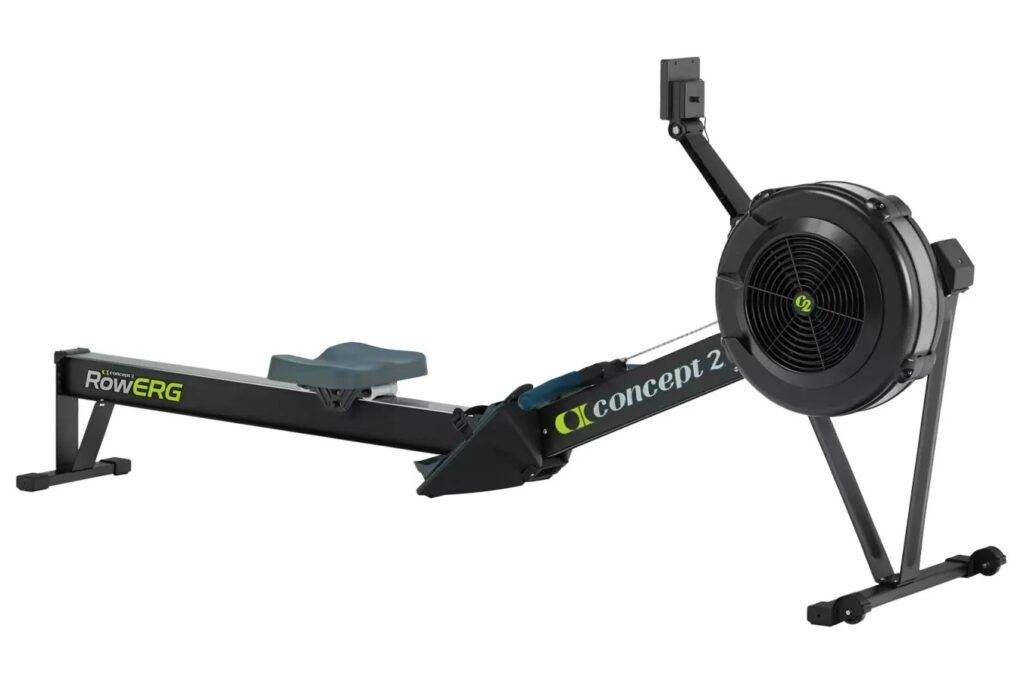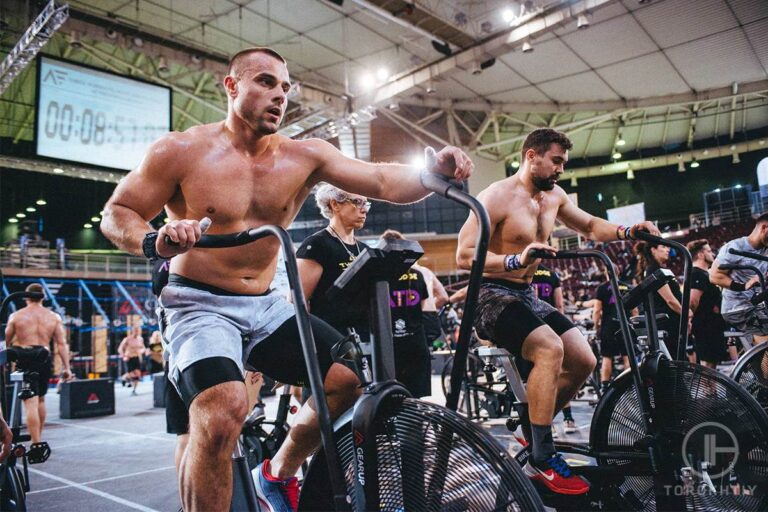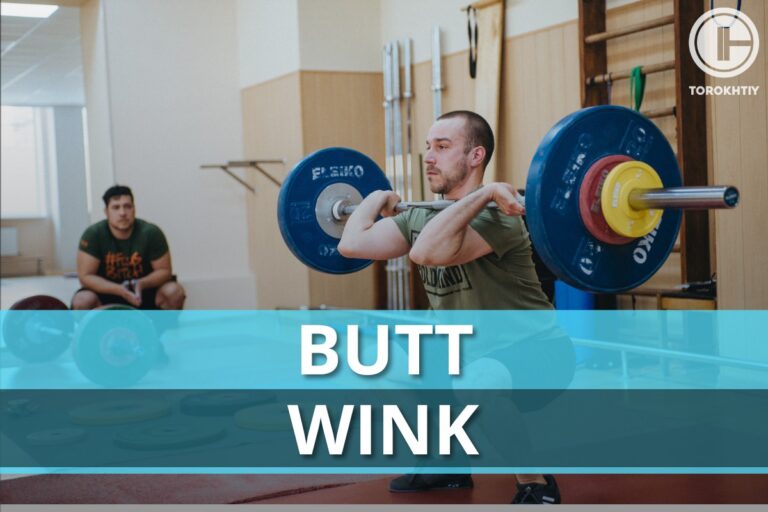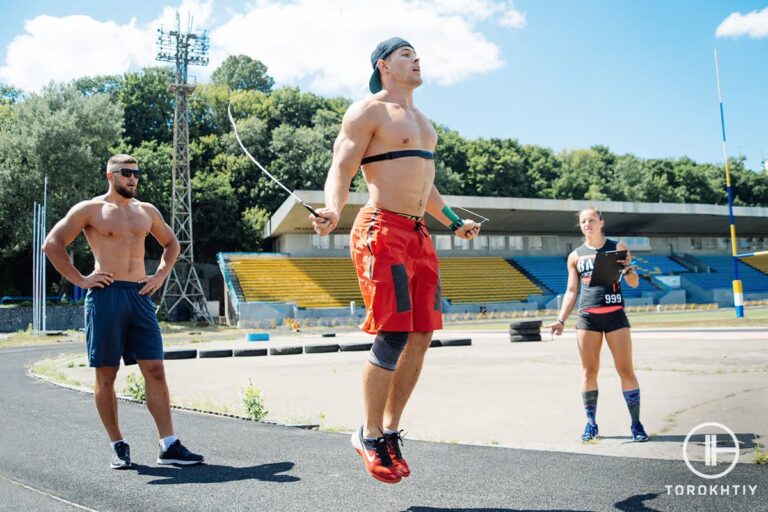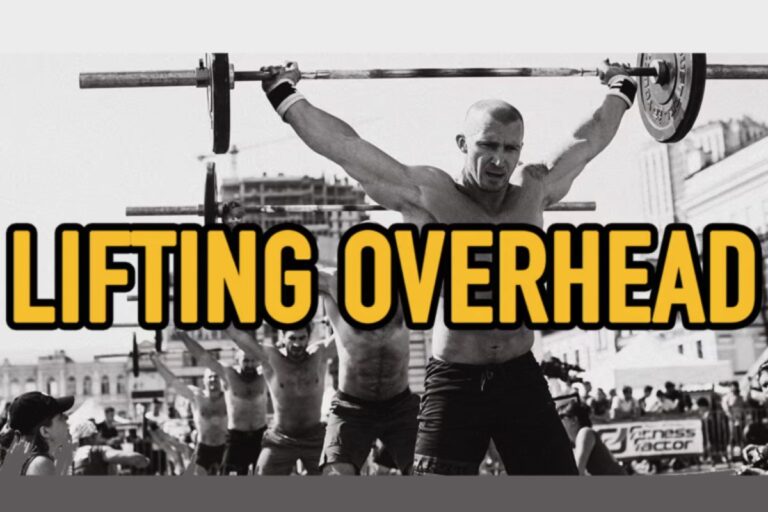10 Rowing Machine Benefits: Boost Your Health & Fitness
If you’re wondering about rowing machine benefits, I am an individual who has experienced firsthand what using a rowing machine can do for one’s overall well-being. I’ve done actual rowing as a sport. And rowing machines are pieces of exercise equipment that are supposed to substitute real rowing and simulate a real-world-like rowing experience.
And based on my many years of rowing, I’d like to introduce you to just how great and effective these machines really can be! The feeling one gets from working out in such a dynamic manner is beyond words – invigorating comes closest! Especially with new technology that makes that simulated feeling extremely realistic. By simply closing my eyes and immersing myself in the workout, I swear, I sometimes can’t even tell the difference.
This form of exercise targets every part of your anatomy and drives the heart rate up in no time! That rhythmic motion created by pulling on the handle and gliding back and forth across the seat makes for great engagement during every session too.
Concerns about whether or not these machines will provide a worthwhile workout may arise – rest assured they’ll more than exceed expectations! They aid in building strength throughout your entire body, including those core areas essential for a solid foundation: legs and upper body.
So come along with me on this informative journey about utilizing a rowing machine towards better personal health benefits.
Let’s row!
What are rowing machine benefits? Rowing machine benefits include improved cardiovascular fitness, increased muscle strength and endurance, enhanced weight loss, low impact on joints, and full-body workout engagement.
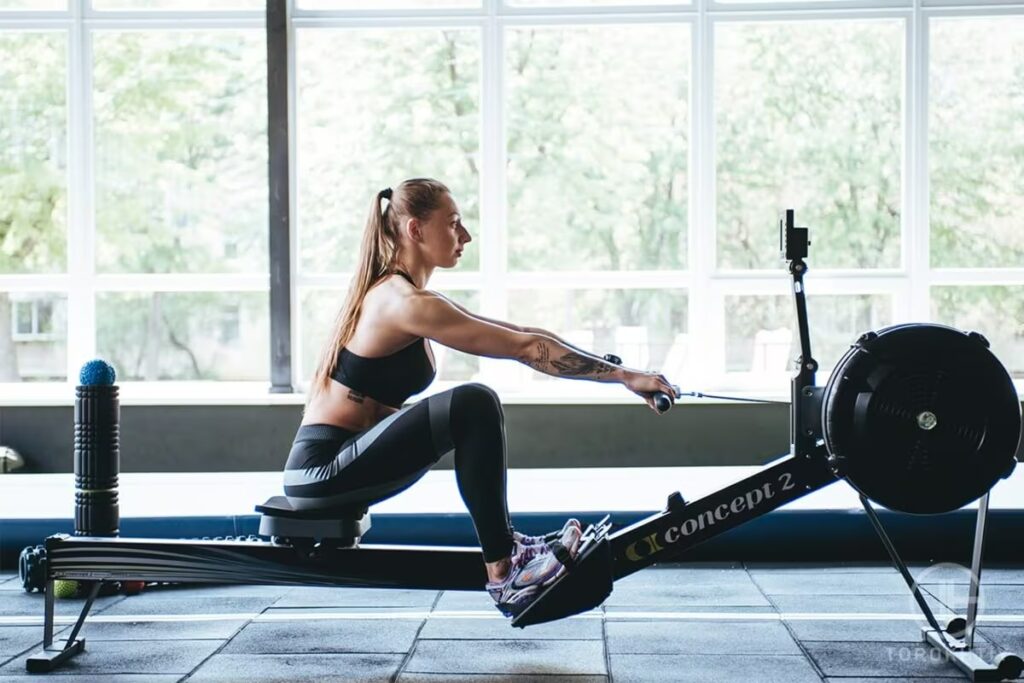
What Is a Rowing Machine?
A rowing machine, also known as an indoor rower or ergometer, is a fitness equipment designed to simulate the motion of rowing a boat.
And that is really it. There is more to say about rowers, but if you were looking for some sort of definition – there it is. But, so that we don’t close this question with one simple sentence – let’s do a deep dive.
When considering investing in a rowing machine it’s important to note key components such as the sliding seat handlebar connection along with the footrest fitted with adjustable straps – all contributing factors for comfortability during use.
One defining aspect of these machines is their resistance mechanism – enabling users to customize their varying levels of difficulty replicating true-to-life dynamics found in actual rowing experiences. Those difficulty levels can usually be modified by a button press or a turnable knob switch.
The flywheel concept plays a significant role in producing varying tension levels utilizing different pressure against every pull made by users on their handlebars.
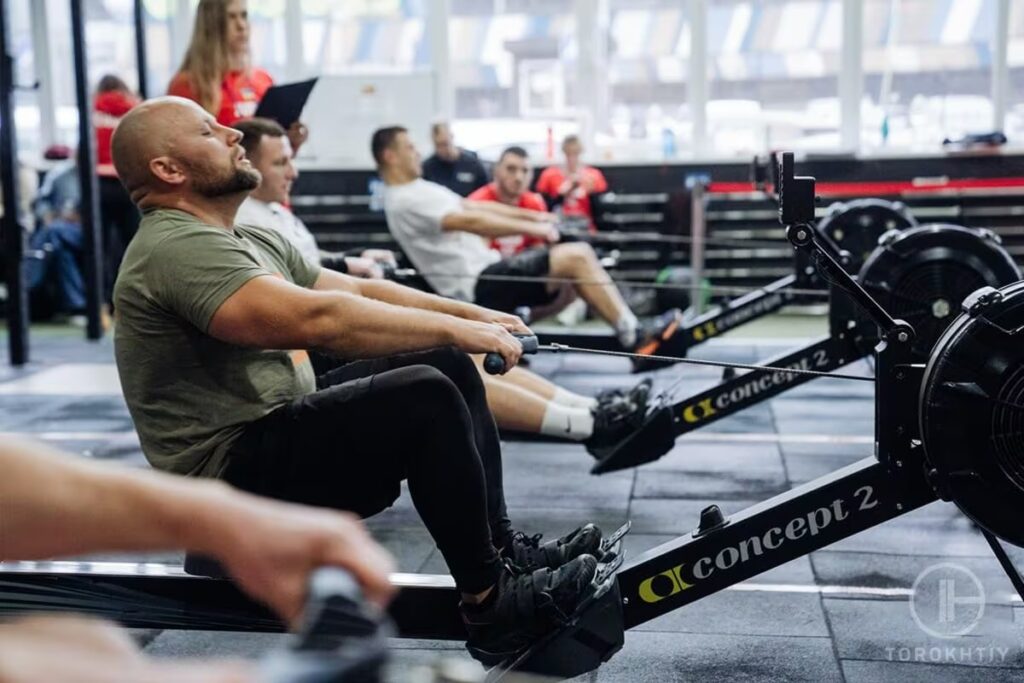
The beauty of exercise equipment like rowing machines lies in its ability to offer detailed digital representation tracking metrics. This involves elapsed time exercising while also showing the distance traveled alongside speed gained, targeting specific muscles captured in calories burnt providing insight into heart rate monitored during maximized exertion efforts invested all along intervals.
But beyond just standard numeric readouts evident from displays featured on each piece lies advanced technology incorporating built-in pre-set programs designed explicitly through mobile applications perfectly suited when bored following monotonous routines stagnating progress or seeking more realistic experiences representative of actual boating adventures.
Just like boats rely upon various forms of propulsion methods based on resource availability such as air, magnetic, water, or hydraulic resistance, rowing machines feature these four unique methods to simulate actual movement felt through real-life situations.
Air resistance rowers use a flywheel capable of spinning and generate the force translated into dynamic movement. This is caused by air passing through it, hence the name. Air resistance rowers are recognized for their adaptable levels giving users to feel just as if they were rowing on open waters.
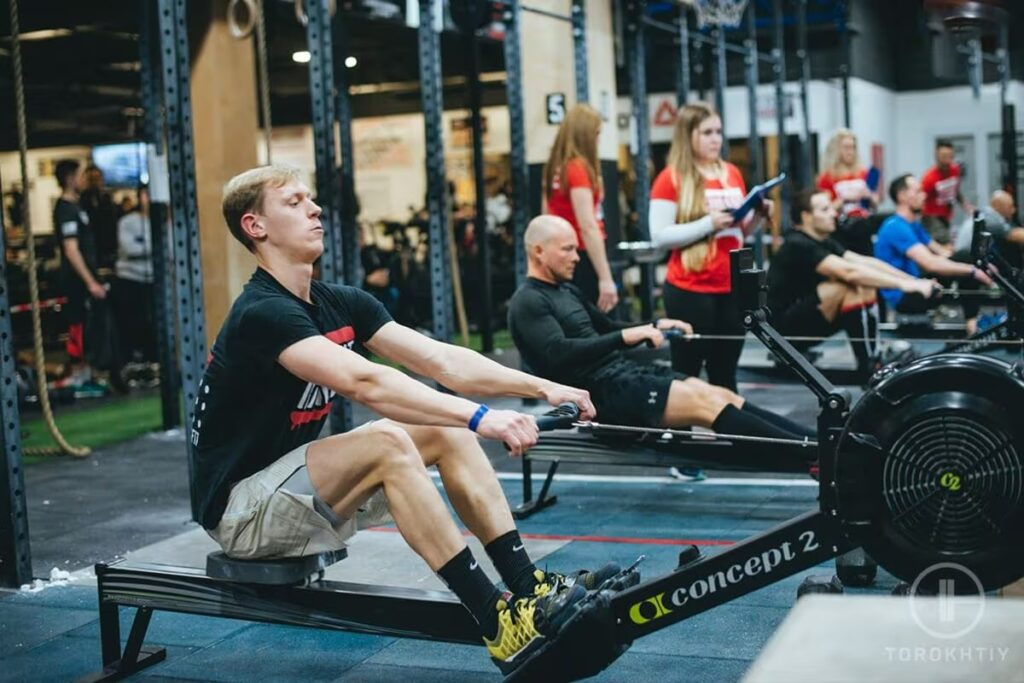
Magnetic resistance rowers rank popular amongst fitness enthusiasts for its quiet and smooth gliding motion experience allowing adjustability via electrifying methods providing users with full control over each session’s intensity.
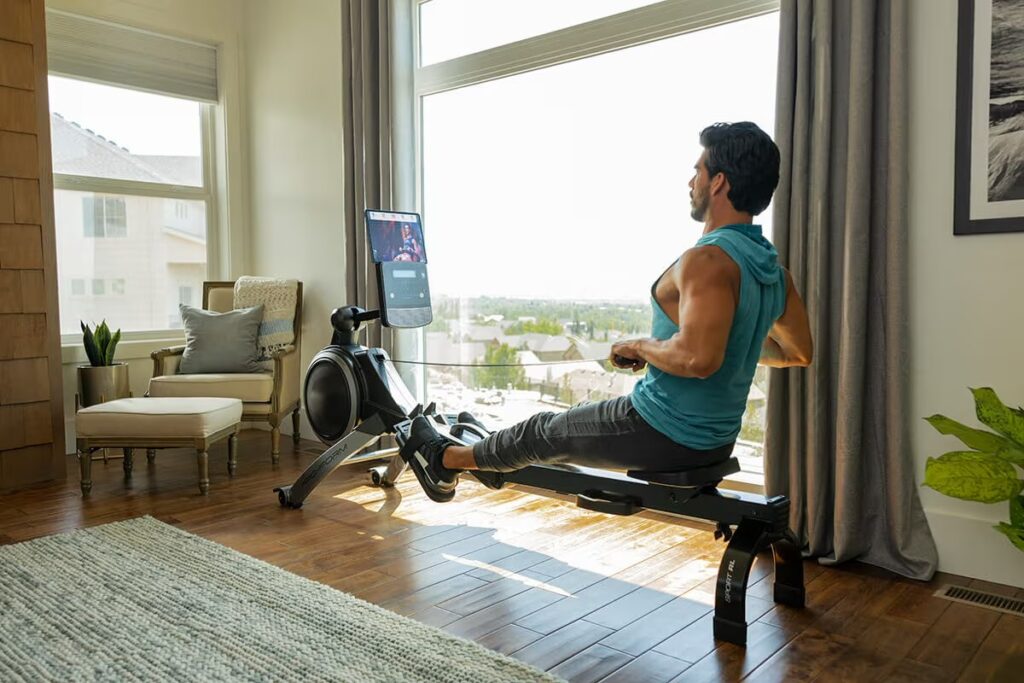
Water-resistant models’ most notable aspect is their ability to replicate natural surroundings and a very natural feel. While giving the soothing rhythm sounds experienced while rowing a boat, the water-resistant rowers thrive in a motion that promotes physical and fully customizable activity. Based on personalized intensity levels contributing towards gaining objectives set when getting fitter progressively.

Hydraulic-resistant indoor rowing machines are fairly compact and portable, which makes them suitable mainly if you’re constrained by space issues, for example, if you live in a small apartment. They also have easily adjustable manual controls for resistance levels.
Row machines’ low-impact design makes them an excellent solution for folks with joint-related problems (mainly old people) requiring regular exercise on a daily basis.
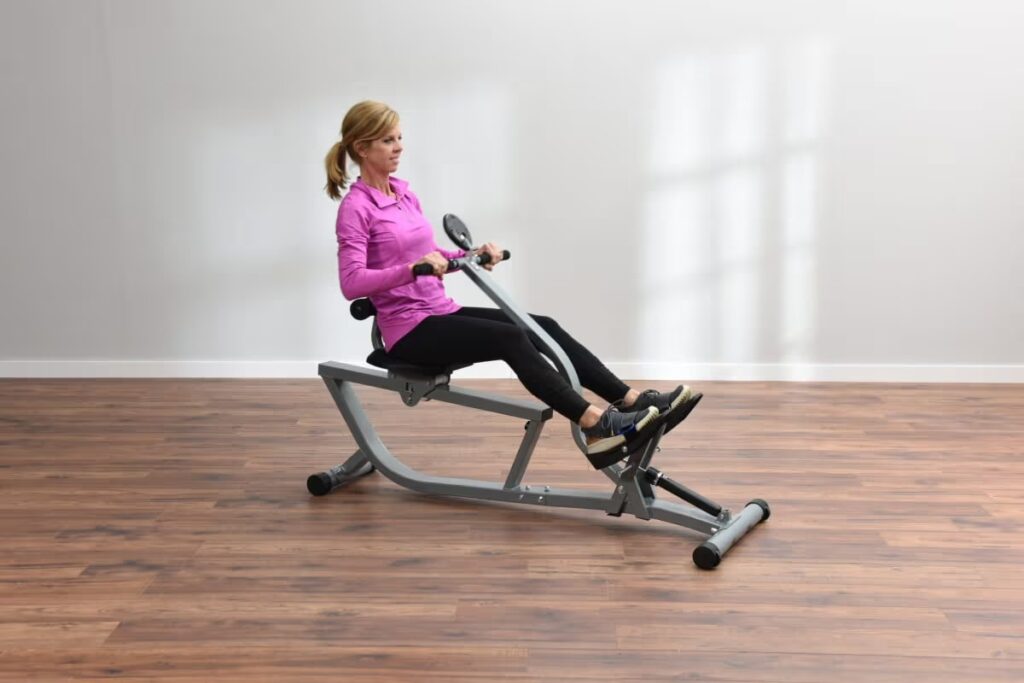
6 Muscles Worked While Rowing
When you’re working on a rower, you’ll mainly be using your upper body area. By ‘upper body’, I’m referring to your arms, shoulders, your back, and core region.
And while perhaps not obvious at first glance, during the exercise movement, you are also using your legs more than your upper body. At least if you’re doing the exercise correctly, because the power behind the rowing exercise comes from the legs. So in a way, this is pretty much a full-body exercise.
Even though you can use your upper body to do the exercise, you’re still better off performing it correctly – and that is by using your legs. Your upper body will still get plenty of strain for development. Now let us take a closer and a more detailed look at rowing benefits.
1. Legs (Quadriceps, Hamstrings, Calves)
Achieving optimal strength and endurance for rowing demands precise execution of a powerful leg drive technique that mobilizes multiple lower body muscle groups. By activating our quadriceps prominently located on our front thigh area alongside our hamstrings behind our thighs, we promote knee flexion concurrently with hip extension for maximum effectiveness.
Harnessing our gastrocnemius with soleus musculature will bring added benefits to every stroke by letting you elevate footrest positioning through ankle movement which adds more power to motions when they need it most.
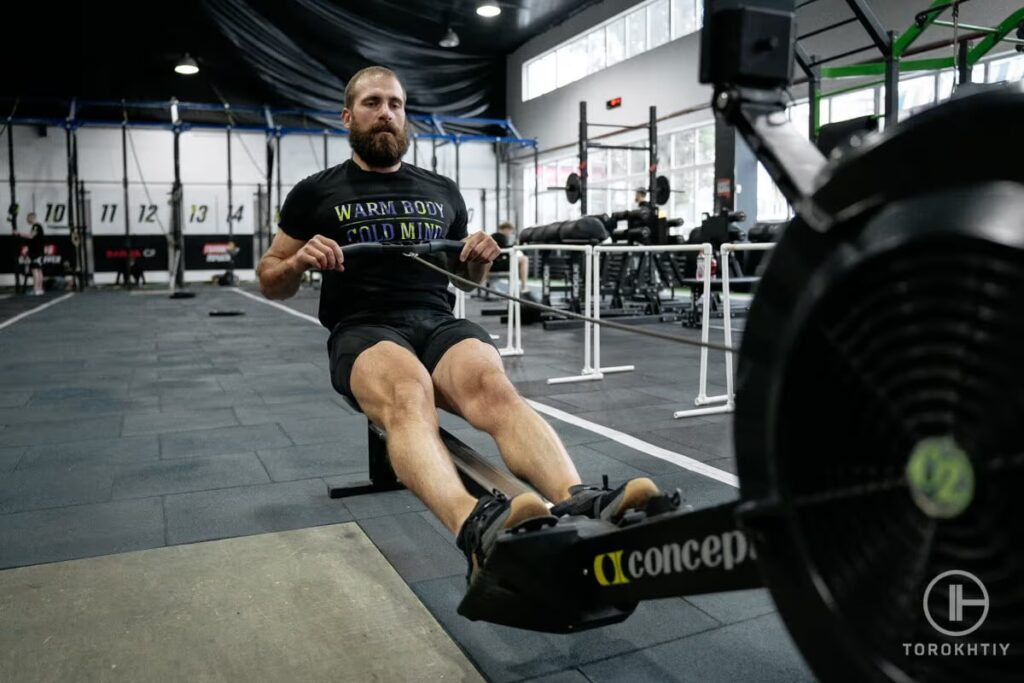
2. Glutes
Rowing requires a harmonious coordination of various muscle groups in different parts of our bodies — one such crucial part is the lower body. This is because it houses one prominent player amidst all: The Gluteus Maximus (GM).
This body part goes out of its way by contracting itself during leg extensions; hence it propels us forward while strengthening our motion throughout it.
Additionally, your GM’s contributions are not limited only to enhancing more stable motions or generating powerful pushing forces; but using them creates enough momentum for you to row even more efficiently.
3. Core (Abdominals, Obliques)
Rowing demands excellent posture! If you’ve ever asked someone to show you how to row properly, then you’ve heard the sentence, “Keep your back straight!”. It’s imperative to keep a consolidated and grounded core structure. This ensures that all the right muscles are being affected while keeping your body safe.
It is not uncommon that people who disregard this part of exercising have back pain, usually in only one side of their back (left or right), depending on their dominant arm.
Keeping your back straight you are ensuring that the strain is distributed evenly.
The precise function of spinal flexion further lies with abs, while obliques assist with partial rotation of trunk capacity by lateral flexion occurrence. This is subsequently resulting in increased endurance within core muscle groups.
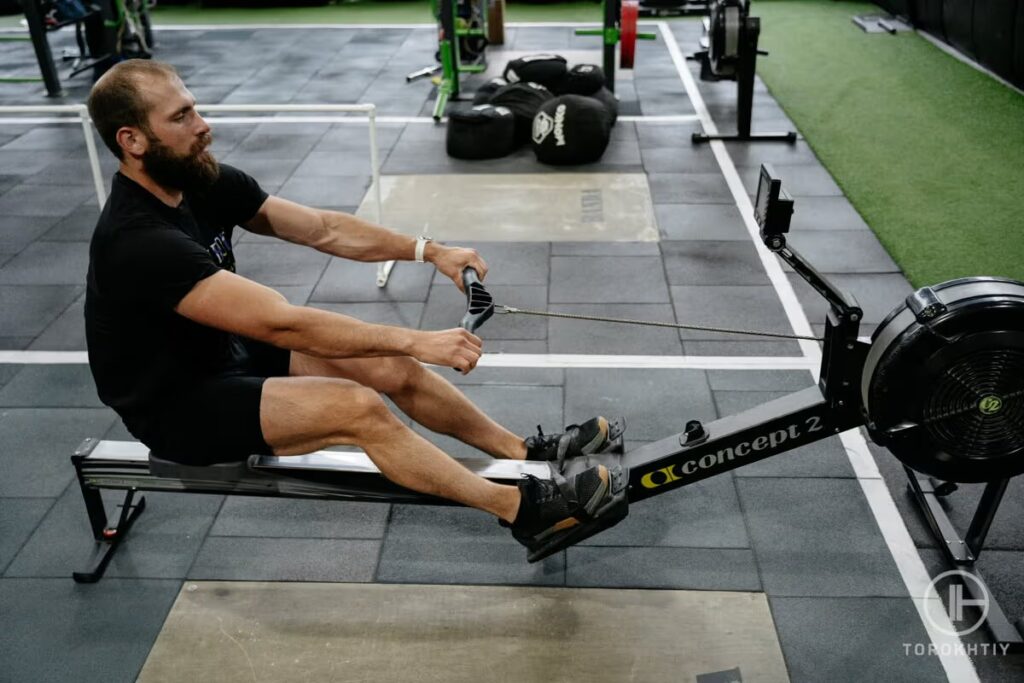
4. Back (Latissimus Dorsi, Rhomboids, Trapezius)
One of the first muscles that you’ll notice working hard during rowing is your trapezoids, or as some people like to call it, “the triangle”. If you’re rowing for a long time, then you probably look like an upside-down triangle with arms and legs and a head. Well, you probably look more like a Greek statue, but you get the point.
Apart from your trapz, your rhomboids and your latissimus dorsi are also working tirelessly the whole time. Rowing is an amazing exercise if you are looking to expand and develop your back.
5. Arms (Biceps, Forearms)
Once you do your first pull of the handle bars, your arm muscles also get activated. You’ll feed a mild strain in both your biceps and your triceps. Your forearms, accompanied by the biceps muscle, especially close to your elbow, work hard in order to bend the elbow and help create the pulling motion. Your biceps are responsible for elbow flexion, while your forearms will help you maintain a secure and tight grip on the rowers’ handles.
This is the reason why you might get sore arm muscles even though you might’ve been under the impression that they weren’t working hard.
6. Shoulders (Deltoids)
A not-so-secret weapon for successful rowing is hidden right within us: our deltoid muscles quietly working away. These small yet strong supporters help us with vital movements such as raising and rotating our arms throughout each robust stroke cycle.
Should you choose to harness their power by incorporating them properly into various exercises, this will contribute significantly towards achieving a thoroughly strengthened shoulder area – optimum results on par with increased overall upper body capability!
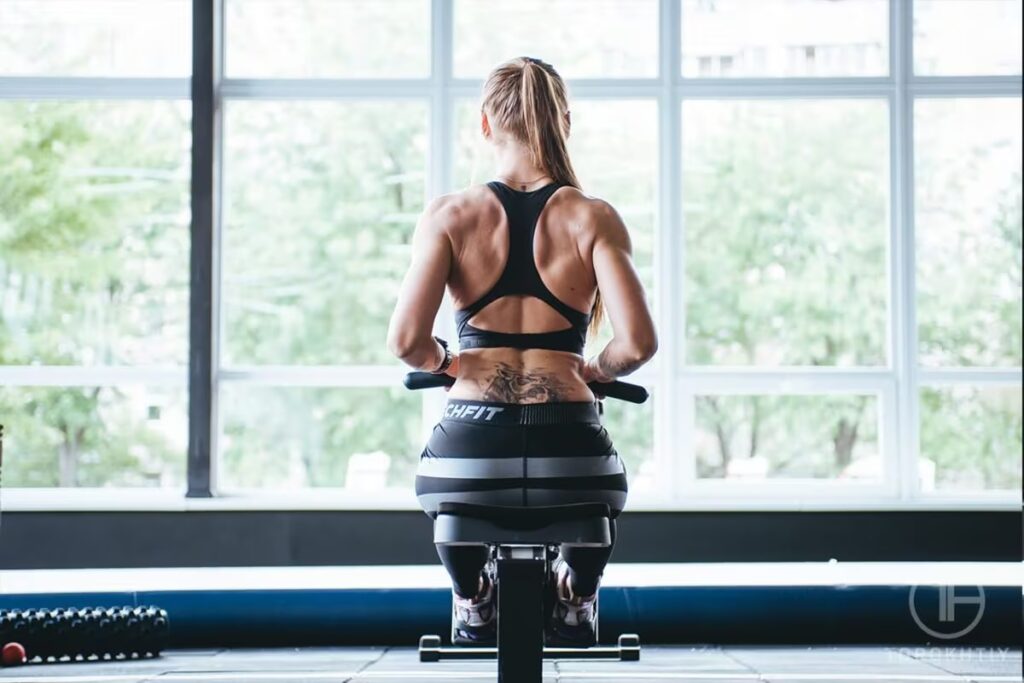
10 Benefits of Rowing Machine Workout
What is a rowing machine good for? My personal belief is that few workouts can surpass the advantages of rowing. This exercise employs all muscles in your body. So what’s so great about using a rowing machine? My response would be – everything! However, there’s more; the benefits of a rowing machine go beyond just physical.
✅ Full-Body Workout
Leaving no stone unturned for those who desire a holistic workout routine for themselves. Rowing offers an ideal choice for it works out different muscles targeted effectively with its pushing and pulling motion aimed at the quadriceps, hamstrings among others like biceps, triceps, etc., thus helping in augmenting overall physical fitness.
This is achieved by strengthening endurance levels along with promoting muscular strength once performed perfectly through consistent practice time after time again.
What’s worth mentioning is that when done right, rowers have been found effective in targeting over 80% of our bodies due to exertion on various muscle areas.
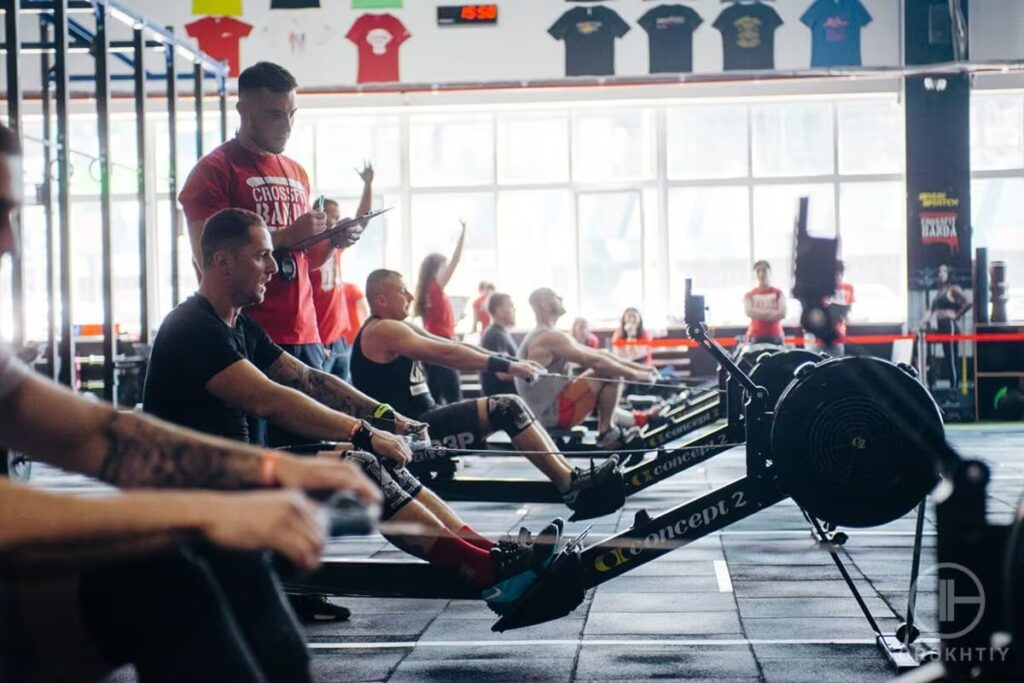
✅ Cardiovascular Fitness
Is rowing good for cardio? People often ponder this question. Rowing is undoubtedly one popular way amongst many for enhancing one’s cardiovascular system’s well-being through proper exercising regimens.
It’s a truly fantastic cardio exercise that not only boosts one’s heart rates but also enables, over time, increased endurance. It also boosts your blood volume levels resulting from its’ mere practice effective in helping reach peak performance by increasing the cardiac output or our body’s overall ability to pump enough blood.
This is because it involves sudden powerful bursts of exercise that require our body to go through what’s like tiny calisthenics or weights sessions every time we engage in paddling motion which helps raise our internal blood pressure levels resulting in much healthier cardiac walls.
✅ Low Impact
As we get older, finding ways to stay fit can become increasingly challenging. Especially if you’re trying to stay fit without risking further strain on our joints and bones. Rowing presents itself as an efficient option that both strengthens the muscles as well as improves bone mineral density while keeping low-impact pressure on the joints themselves.
Compared to other high-impact exercises such as running and jumping, which may result in excessive stress on the knees and hips during each session, rowing offers a more moderate approach suitable for individuals facing sensitivity in areas prone to being compromised such as those recovering from injuries and seniors above 65 years old looking for viable physical activity options.
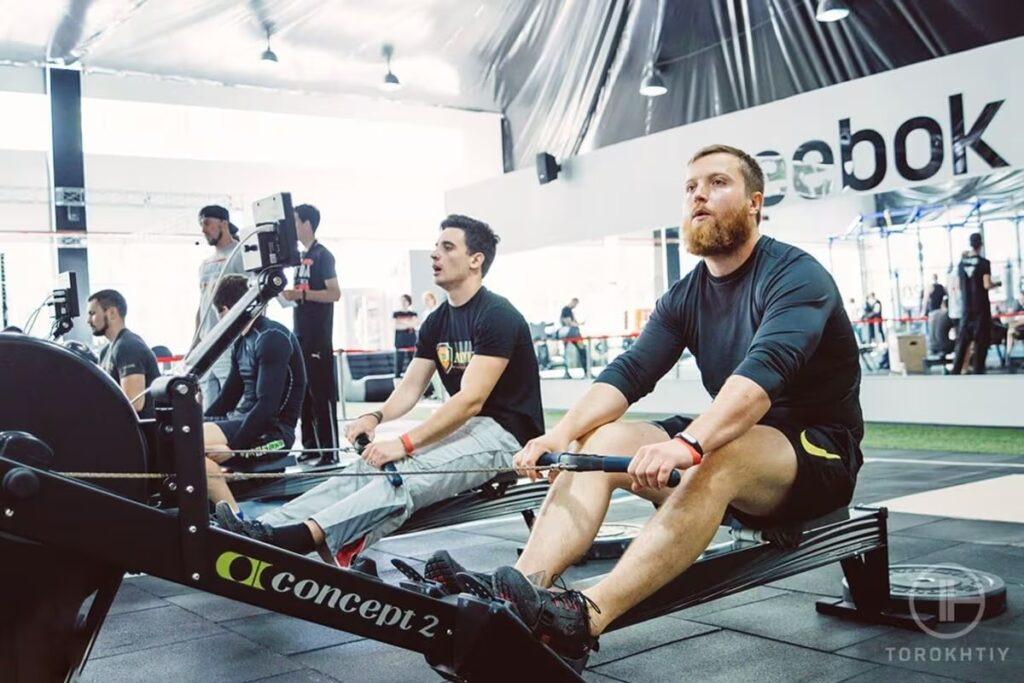
✅ Weight Loss And Fat Burning
To maintain good health and effectively lose weight through exercise, consider adding rowing to your routine. Rowing encourages calorie burn by increasing metabolic rate while also aiding in fat burning and optimizing body composition. Consistent participation in this type of workout alongside consuming nutrient dense foods sets you up for success when it comes to long term weight management goals.
✅ Improved Strength And Tone
Achieving physical strength while simultaneously toning key muscle groups is possible through regular use of a rowing machine workout routine. The pulling and pushing motions engage various muscles such as those found in arms, legs, core, and back regions. You’ll greatly benefit from this type of exercise method. With dedication to regular usage your endurance levels, along with finely tuned musculature will flourish for an overall sculpted appearance that is healthy as well as desirable.
✅ Enhanced Endurance
Rowing is, without a doubt, one of the most beneficial forms of exercise when it comes to boosting your overall endurance levels. As a matter of fact. By challenging both the aerobic and anaerobic systems through specific movements performed on the rowing machine or watercraft device. Individuals can effectively increase their stamina over time. Ultimately all these efforts result in improving overall levels of fitness so that other physically demanding activities become easier as well.
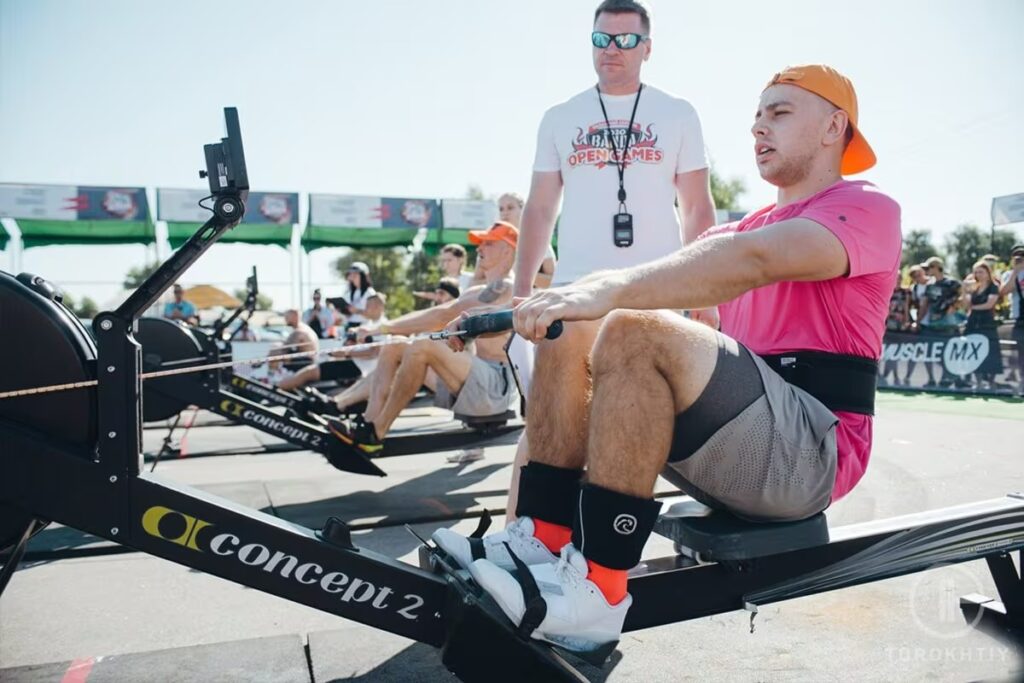
✅ Mental Health Benefits
When it comes to retaining mental well-being, incorporating rowing drills into one’s routine could be quite beneficial. Engaging in a rhythmic movement pattern accompanied by deeply concentrated breaths exemplifies a calming meditation practice that encourages relaxation while also dissipating stress levels.
Additionally, the chemicals released when our bodies engage in rigorous physical activity, such as endorphins, contribute to heightened moods whilst also relieving anxiety or depression symptoms. And finally, rowing allows us to momentarily unplug from trivial daily pressures and simply exist mindfully within our surroundings.
✅ Low Risk Of Injury
If you’re interested in staying fit while reducing your chances of injury, rowing could be just what you need! The well directed motion and gentle resistance make it easier on your body than workouts involving high force. By focusing on correct technique and maintaining good form, you can further decrease any probability of strains or injury.
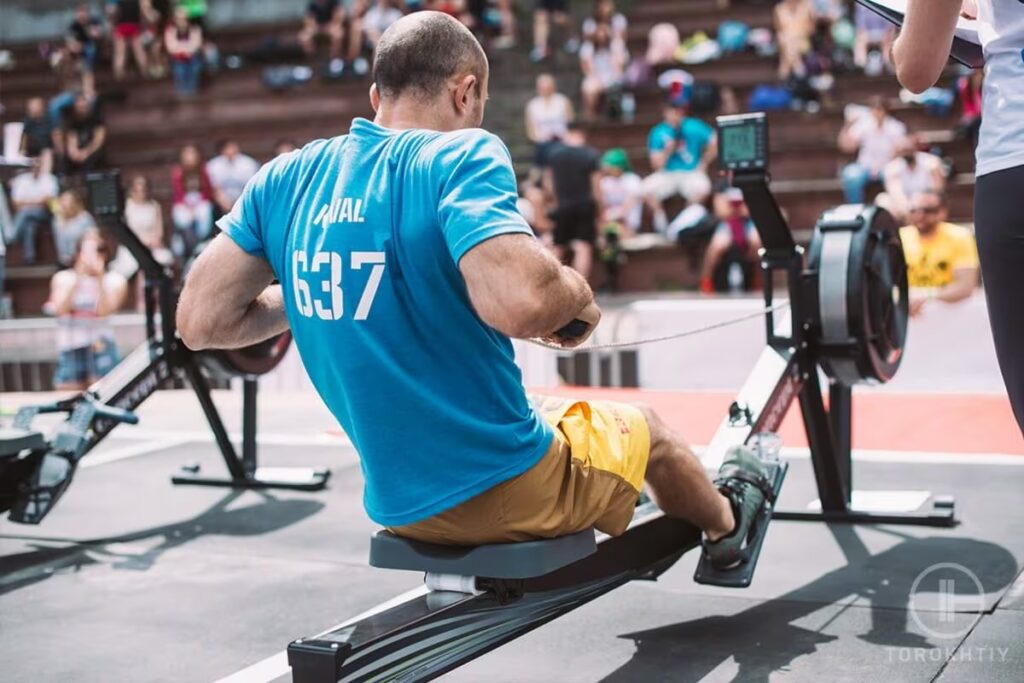
✅ Convenient And Time-Efficient
The best part about a rowing machine is that it offers proficient support for both Cardiovascular exercise as well as Strength-training – in the comfort of your own home (or a gym). This is helping us save time while achieving increased fitness levels. It’s perfect for busy individuals trying to balance work-life while incorporating healthy practices into their daily routine, target muscle groups simultaneously; elevate your heart rate which gives us one thing – a remarkable fitness experience!
✅ Versatility
One of the many benefits of using rowing machines is its ability to adapt resistance levels that meet varying physical conditions and training objectives regardless if you’re a beginner or an advanced athlete. This quality enables everyone (no matter what fitness level you belong to) access to a customized range of motion while, at the same time, challenging yourself continuously. This ensures goal attainment becomes more achievable than ever before possible!
With all these advantages incorporating rowing exercises into one’s lifestyle not only improves physical well-being but also contributes positively towards mental health too! So, what does rowing do for your body? A lot!
Possible Drawbacks of Rowing Machine Workout
Opting for rowing machine workouts has several potential drawbacks that any enthusiast ought to note beforehand.
❌ One such risk involves the technique and form required during rowing exercises – beginners may need extra guidance on how to get started adequately without causing strain or injury.
❌ Additionally, since these workouts mainly focus on the lower body muscles, legs, glutes, and abs – people looking at building strength elsewhere need extra exercises included within their routines’ design. But to be fair, rowing is a full-body exercise, so the upper body will still be involved.
❌ The repetitive motion needed during these workouts may further lead to joint or muscle strain cases if not done correctly – adding caution levels when executing movements should be highly prioritized.
❌ Another aspect worth considering is ‘machines size’ before purchasing one, since they can take up significant space within your home gym area. Especially take a close look at the length of the machine, since width usually won’t be an issue.
❌ Lastly, since everyones’ preference and comfort levels differ, trying out a rowing machine at your local gym may come in handy to determine if it is for you. It’s essential to listen to your body so progression is gradual without overexerting yourself beyond discomfort limits.
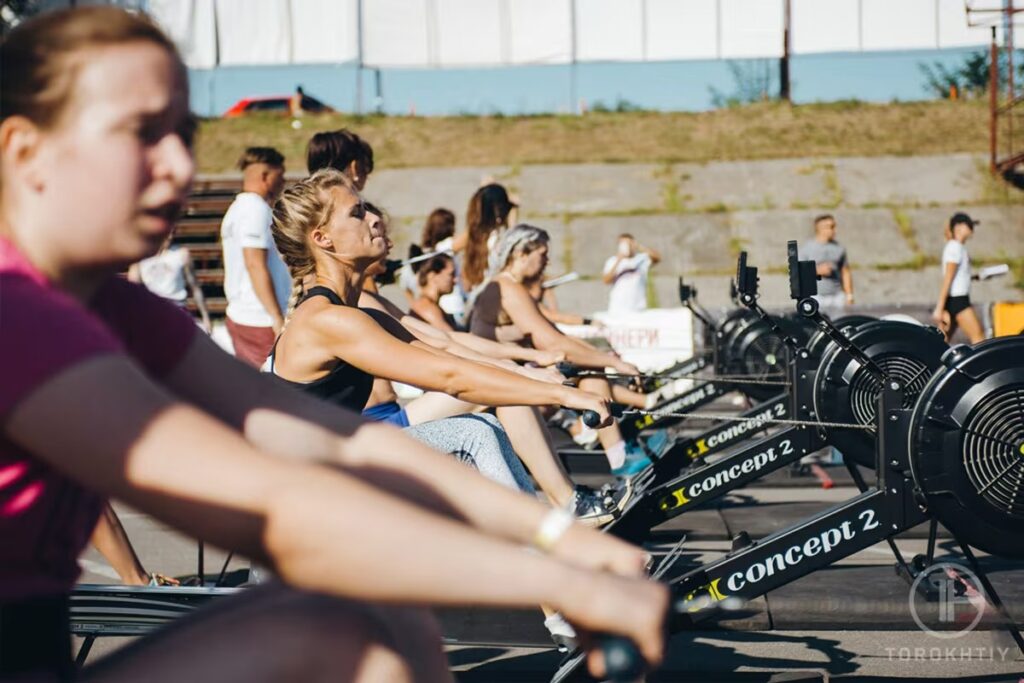
How to Use a Rowing Machine Correctly?
Rowing exercise can give your entire body a great workout but make sure you use the machine correctly so that you can reap its rowing exercise benefits effectively AND safely. Let’s talk about the right way to use it step by step. Before starting, adjust the footrests carefully to ensure they fit properly, and position the straps over your toes for stability during motion.
Sit on the machine with proper posture (back straight) and feet in position while also engaging core muscles for added stability-search for feeling powerful in every movement! Begin by pushing off strongly against footrests while simultaneously reaching down low with the handle until the lower ribs become engaged, too; this creates the necessary force to complete a successful stroke cycle.
Complete each stroke by extending your legs fully as you simultaneously lean backward a bit, pull your handle towards your upper body area. This way you’re targeting both your upper back & shoulder muscles. Remember, it’s not just about stretching your abs!
To recover between cycles, extend arms, then hinge forward at hips before sliding shins back into position and then rinse and repeat with controlled motion and rhythm (avoid sudden jerks or any sort of explosive momentum). Don’t let injuries slow you down or stop progress – make sure you follow these steps!
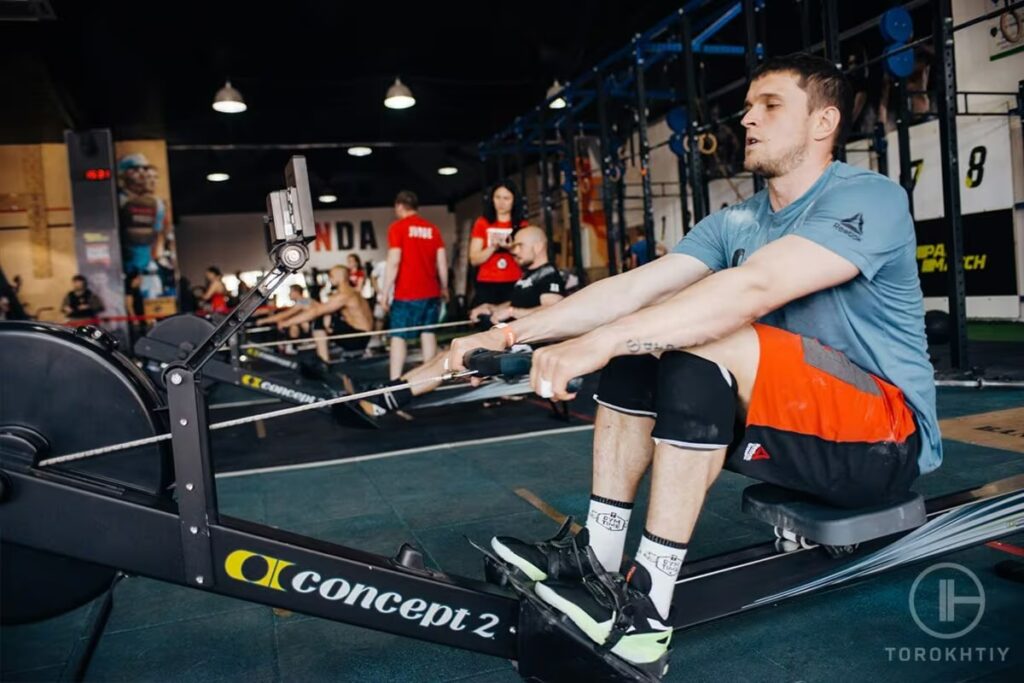
Adjust the resistance level on the rower according to your personal fitness goals, starting with lower resistance if new to rowing, then gradually increasing it as strength and endurance build. Also pay attention to breathing patterns that involve inhaling during starting position/ exhaling during the drive phase ensuring proper oxygen flow to muscles. This helps you maintain focus and energy levels.
When transitioning from an elevated state down into resting mode after using the rowing machine, remember that gradual movements are key for optimal bodily function. Stretch large muscle groups including the legs, back and shoulders which promotes physical resilience through enhanced flexibility whilst decreasing overall muscle rigidity, thereby increasing quicker recovery time of muscles post-workout activities use.
A bit comprehensive and detailed, but that is pretty much the whole exercise.
Rogue Fitness Black Concept 2 Rowerg Rower Review
As previously mentioned earlier in my discussion regarding rowing workout benefits, respectfully introducing Rogue Fitness Black Concept 2 RowErg Rower – which after personal experience, I must say, has set a new benchmark for indoor rowers.
Setting up this machine was trouble-free, following clear instructions that ensured a quick assembly process of just under 20 minutes with no need for professional assistance.
This rower is 96 inches long, which is long enough to accommodate tall people. And, well, that’s the whole point. And to further help you out in this segment, you can adjust the seat height to 14’’ as standard or 20’’ for the tall setting. The overall footprint of this rower is 8’ x 2’, which is not really compact, but it also isn’t huge. And that comes into play if you have limited space available.
The Concept 2 RowErg Rower carries a compact design which makes storing the machine effortlessly, thanks to the 24’’ of width. It’s also using just minimal space due to its caster wheels being installed.
The advanced PM5 Performance Monitor is a standout feature that delivers essential workout data like distance, speed, pace, calories burned & watts while remaining customizable in terms of positioning as per an individual’s preference.
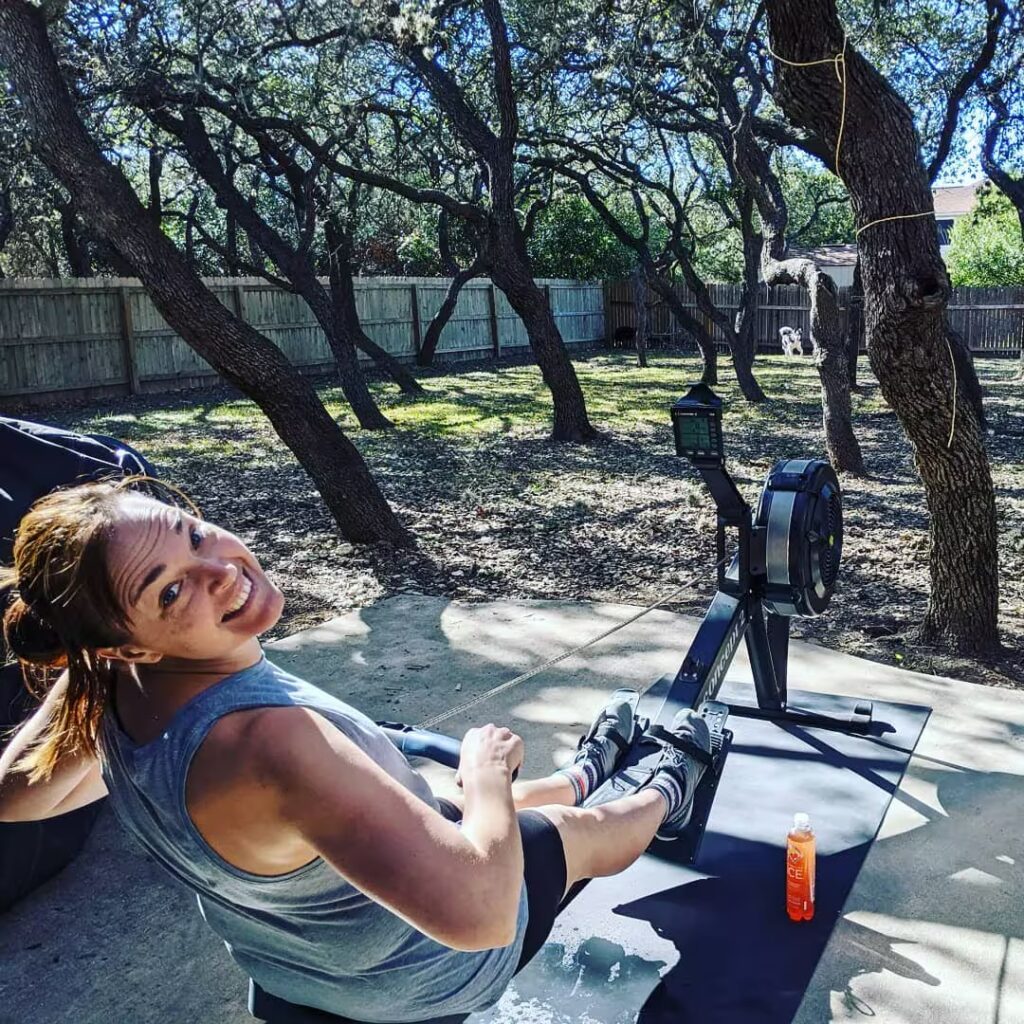
Also, some stats worth mentioning are the 54’’ aluminum mono rail. It’s super solid and silent, and it glides without any issues whatsoever. There’s the item weight, which is 57 lbs if you go for the standard seat option and 68 lbs if you go for the tall one. And the maximum user capacity is sitting at 500 lbs, which is plenty! Also, it’s assembled in the USA!
Although slightly costlier when compared to other models available in today’s market; considering The Rogue Fitness Black Concept 2 RowErg Rower as an investment promises maximal quality build and high-end performance altogether-resulting in it is worth every penny invested, making it ideal for anyone looking towards getting a durable, high-quality machine option thus making highly recommendable.
Positives:
Could be better:
FAQ
Is 20 Minutes of Rowing Enough?
Yes. 10-20 minutes of rowing is generally recommended. In those 20 minutes you will be working about 85% of your body, and your heart rate will be high enough in order to burn an optimal amount of calories without straining yourself too much.
Can You Get in Shape by Just Rowing?
Yes. Rowing is a full-body exercise, and it is an extremely efficient one. Both your lower body muscles groups and upper body will be engaged in each repetition of the exercise. If getting in shape is your goal, opting for rowing is a very good idea.
Will Rowing Give Me ABS?
One surefire method of enhancing core muscle strength – primarily those muscles situated in the abdomen region – is through rowing exercises. So, in short, yes, rowing can give you abs. During these workouts, every single stroke works out these vital muscle groups culminating in pronounced development eventually. But keep in mind that you can have perfectly tight abs, and they might not be visible. This is because of your body fat.
Consider your nutrition as well as abs exercises if you’re looking for that summer six-pack (not beer).
Conclusion
Rowing is unequivocally an exceptional exercise that delivers multiple benefits for our mental and physical welfare while simultaneously providing a total body workout plan.
Rowing improves cardiovascular endurance significantly towards weight loss while also boosting muscle strength and stamina safely over time. Recent research has shown that consistent rowing workouts can elevate emotional well-being by decreasing stress levels while inducing more empowering moods.
I would love to hear your thoughts on rowing machines. Your experiences, your results – everything. Have home rowers helped you, and if yes, how? Sharing different techniques, tips and viewpoints helps both me and other readers form a better picture about these wonder machines. So don’t be shy and drop that comment in the comment section below.
Happy rowing!
Also read:
- What Muscles Does a Rowing Machine Work
- Best Rowing Machine Under $500
- Best Water Rowing Machine
- Best Compact Rowing Machines
- Types of Rowing Machines
- Rowing Machine vs Treadmill
- Is Rowing Good for Weight Loss
- Rowing Machine for Abs
- Best Rowing Shoes
References:
- The physiology of rowing with perspective on training and health // NBCI: https://pubmed.ncbi.nlm.nih.gov/ 32627051/
- Ergometer rowing to mitigate spinal pain in neurosurgeons // Sciencedirect: https://www.sciencedirect.com /science/article/pii/ S2214751921002061
- Physiological and Performance Effects of Low- versus Mixed-Intensity Rowing Training // LWW: https://journals.lww.com/acsm-msse/Fulltext/ 2008/03000/ Physiological_and Performance Effects_of_ Low_.26.aspx
- Training-specific changes in cardiac structure and function: a prospective and longitudinal assessment of competitive athletes // NBCI: https://pubmed.ncbi.nlm.nih.gov/ 18096751/
- Anatomy, Joints // NBCI: https://pubmed.ncbi.nlm.nih.gov/ 29939670/
- Bone mass and bone metabolic indices in male master rowers // NBCI: https://pubmed.ncbi.nlm.nih.gov/ 25224128/
- Effects of Rowing Exercise on Prevention of Metabolic Syndrome and Sarcopenia for Senior People // Researchgate: https://www.researchgate.net /publication/272991551 Effects_of_Rowing Exercise_on_Prevention_ of_Metabolic_ Syndrome_and _Sarcopenia_for _Senior_People
- Breaking Through “The Wall”: An Examination of Elite Rowers and Their Experience of Conquering Their Mental Boundaries // Digitalcommons: https://digitalcommons. georgiasouthern. edu/cgi/viewcontent.cgi? article=1111& context=etd
- What to know about endorphins // Medicalnewstoday: https://www. medicalnewstoday.com/ articles/320839
- Rowing machine muscles worked: fire up your quads, glutes, and more // Livescience: https://www.livescience.com/ rowing-machine-muscles-worked
- Understanding Your Target Heart Rate // Hopkinsmedicine: https://www.hopkinsmedicine.org /health/wellness-and-prevention/understanding-your-target-heart-rate
Why Trust Us?
With over 20 years in Olympic Weightlifting, our team does its best to provide the audience with ultimate support and meet the needs and requirements of advanced athletes and professional lifters, as well as people who strive to open new opportunities and develop their physical capabilities with us.
By trusting the recommendations of our certified experts in coaching, nutrition, dietology, and sports training programming, as well as scientific consultants, and physiotherapists, we provide you with thorough, well-considered, and scientifically proven content. All the information given in the articles concerning workout programming, separate exercises, and athletic performance, in general, is based on verified data. We ensure that you can rely on our professionals’ pieces of advice and recommendations that can be treated as personalized ones which will benefit you and fully meet your needs.
The product testing process is described in more detail here
Author: Ihor Shymechko
Pro Olympic Weightlifter, Coach
Best Results: Snatch – 208 kg,
C&J – 240 kg
Ihor has been a professional weightlifter since 1996, boasting over two decades of competition experience. His notable achievements include clinching the European Championship in 2009 and securing a silver medal in the 105kg division at the Senior World Championships in 2011. Ihor represented his country in the 2008, 2012, and 2016 Summer Olympics. After retiring from competitive weightlifting, he transitioned to coaching, leveraging his vast experience to guide athletes who now compete on both national and international stages.

